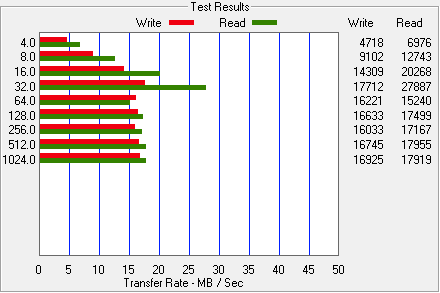Performance
Performance
The configuration screenshots we have just shown you, cover like 60% of the units' capabilities and possibilities. You can understand that explaining every little detail would be a tremendous task, and also making it more difficult to understand the product. The primary features have been shown. Let's have a look at it's performance.
For our test we'll use the Falcon II SSD from G.Skill, we'll test only one logical unit.
| Performance |
Read MB/s |
Write |
| USB 2.0 |
16 |
11 |
| Gigabit Ethernet | 27 | 17 |
So you'll notice that running the device over USB 2.0 is seriously hindering performance. Read speeds will be roughly at 15 MB/sec. Once we move to a Gigabit Ethernet connection we do see better performance however we feel that performance remains below our expectations and current standards though.
For your average Ethernet file transfers this is however 'adequate'.

Noise levels
The unit as tested is not on the noisy side, in fact it is quite silent. Once the PWM fan kicks in you can hear the airflow and sure, your HDD will make the actual noise you hear. But the NAS unit is barely audible, though not extremely noisy or anything.
Power consumption
We placed the good old wattage meter in-between the wall power socket and the device to see how much power it actually sucks up. I mean, this is a semi-based controller slash server really.
The NAS is clever in the sense that it will power down the storage units when not used:
| NAS with 2 HDDs | Watt |
| Standby | 1 |
| Idle | 17 |
| HIGH | 22 |
So that's good, the I-NA312N1 isn't hogging up much energy and with one HDD and one SSD we peaked at under 25 Watt.
